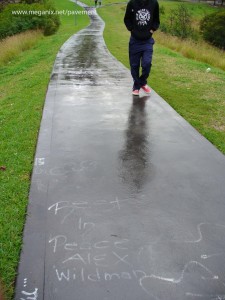 Every now and then a memorial for someone who has died appears on the pavement. Usually there is a very good reason why the memorial has been written at that time on that particular spot on the ground.
Every now and then a memorial for someone who has died appears on the pavement. Usually there is a very good reason why the memorial has been written at that time on that particular spot on the ground.
Teenager Alex Wildman died in July 2008, his suicide and the inquest that followed attracting much media attention because of allegations of bullying at his high school near Lismore in northern NSW. Epitaphs for Alex appeared in ‘unofficial’ media, such as videos on YouTube and graffiti on footpaths. The graffiti was written around the Campbelltown area in south-western Sydney by Alex’s friends at Ingleburn High School, where he had been a pupil until his family moved to Lismore.
The painted RIP in the photograph appeared some months after much smaller messages for Alex were written in black texta along the edges of the same footpath on the western side of Macarthur Railway Station.
I have written about memorialization of the dead on the pavement in City of Epitaphs, an article recently published in the on-line journal Culture Unbound.
Hicks, M. 2009. City of epitaphs. Culture Unbound 1 (Article 26):453-467.
If you are like me, and enjoy discovering obituaries and other unexpected messages on the pavement, then I wish you a pleasurably doleful New Year.

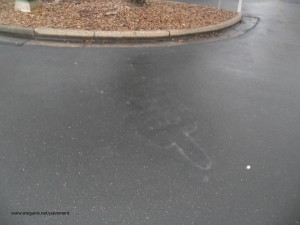 On a wintry day in Orange (mid-western New South Wales) my graffiti-sensing camera picked up the ghost of a boastful hoon, faintly discernable through the sheen on the wet asphalt in the council car park. Street dawg 94 seems to be making a reappearance after being painted over years ago. Â
On a wintry day in Orange (mid-western New South Wales) my graffiti-sensing camera picked up the ghost of a boastful hoon, faintly discernable through the sheen on the wet asphalt in the council car park. Street dawg 94 seems to be making a reappearance after being painted over years ago. Â 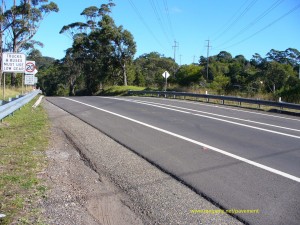
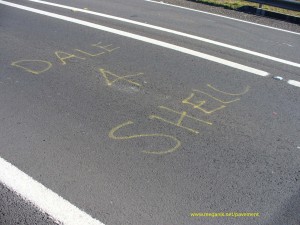




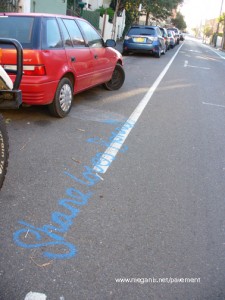 Every so often a large romantic message turns up on the pavement – sometimes on a country road, sometimes on a city street – turning private feelings into blaring headlines. Obviously premeditated and deliberately located so they will be seen by the object of affection (or disappointment), these messages can’t be compared with the miniature declarations of love made by wet cement opportunists. I believe they are generally written by males. Am I right?
Every so often a large romantic message turns up on the pavement – sometimes on a country road, sometimes on a city street – turning private feelings into blaring headlines. Obviously premeditated and deliberately located so they will be seen by the object of affection (or disappointment), these messages can’t be compared with the miniature declarations of love made by wet cement opportunists. I believe they are generally written by males. Am I right? 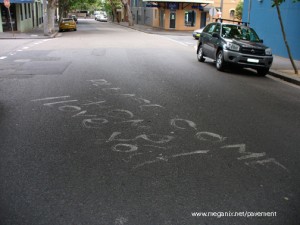
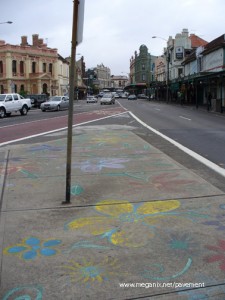 I wonder how many people know the story behind the coloured flowers on the traffic island at Newtown Bridge? They were originally painted during a day-long Reclaim the Streets party in November 1999, but if that were the whole story they would have worn off long ago. In fact, these flowers were deliberately preserved by friends of Kathy Jones.
I wonder how many people know the story behind the coloured flowers on the traffic island at Newtown Bridge? They were originally painted during a day-long Reclaim the Streets party in November 1999, but if that were the whole story they would have worn off long ago. In fact, these flowers were deliberately preserved by friends of Kathy Jones.